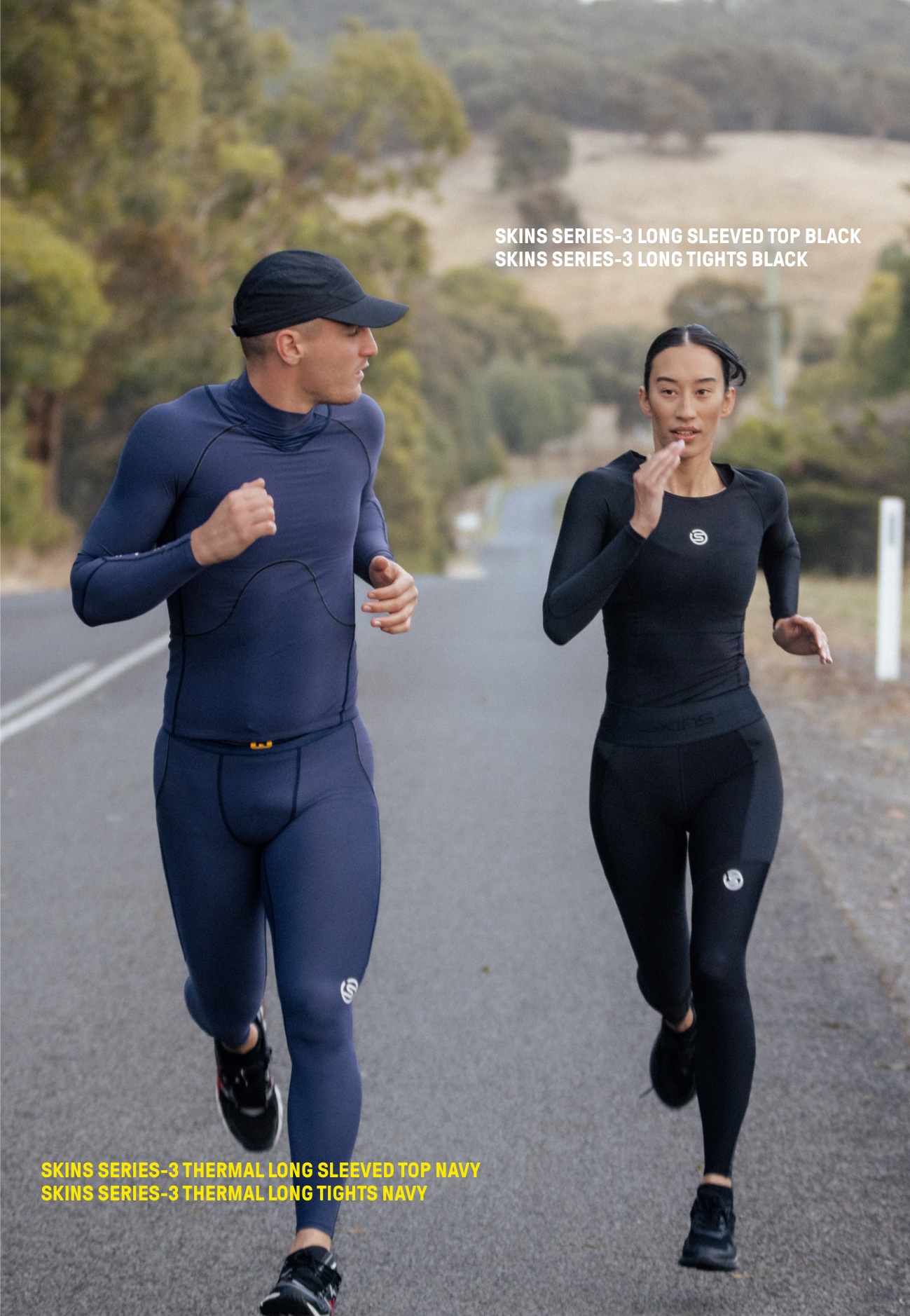HOW FAR DO YOU RUN…?


HOW FAR DO YOU RUN...?
Running is a dynamic activity that millions of people around the world partake in, but how many kilometres do people rack up on a daily basis...
Running
Average run - 6.3km
Half Marathon - 21km
Marathon - 42km
Ultra Marathons - 50km, 100km, 161km
What about how many kilometres (on average) we rack up during other sports?
Football - 10-12km per match
Tennis - 4.8km
Rugby - 6-7km
American Football - 2km
Basketball - 4.1km
Field Hockey - 8-9km
Let's not forget about athletics
Sprints - 60m, 100m, 200m, 400m
Middle distance - 800m, 1500m, 3000m
Long-distance - 5000m, 10,000m
Hurdles - 60m, 100m, 110m, 400m
Relays - 4x100m, 4x400m
So what SKINS should 'runners' be using?
SERIES-3 Long Tights wrap the calves, quads and glutes
SERIES-3 Half Tights protect the quads and glutes
SERIES-3 Calf Tights and performance socks wrap the calves and are perfect for combining with Half Tights
SERIES-3 Long Sleeve Top wrap the arms and shoulders
SERIES-1 Arm Sleeves offer support for the forearms and biceps (Read more about why professional runners wear arm sleeves)
If you're a pro or have an intense training regime, you may want to consider our SERIES-5 counterparts of the above. SERIES-5 offers our highest level of compression. Find out more about the difference between SERIES-3 and SERIES-5 here.
Why should 'runners' wear SKINS for Active performance?
We've already established that running is a dynamic sport that millions of people do (one way or another) daily, and it's been proven that SKINS improve running economy. But how? SKINS wrap, support, and compress your working muscles which result in the following:
Increase venous return
Venous return refers to the rate of blood flow back to the heart.
Reduce exercise-induced muscle damage (EIMD)
EIMD is defined by symptoms that present both immediately and for up to 14 days after the initial exercise bout.
Reduce delayed onset muscle soreness (DOMS)
Delayed-onset muscle soreness (DOMS) is muscle pain that begins after you’ve worked out. It normally starts a day or two after a workout. You won’t feel DOMS during a workout.
Accelerate recovery processes
Proper use of SKINS help speed up your recovery just as hydration, cooldowns, stretching, and nutrition helps.
Remove lactic acid faster
Lactic acid build-up can cause muscle pain, cramps and muscular fatigue. It's produced when your body is low in oxygen, and it needs to convert glucose into energy. SKINS help increase the oxygenation process.
Increase muscle oxygenation
Muscle oxygenation is the rate of oxygen usage and supply to the working muscle tissue.
Improve body temperature control
Improved blood flow from the compression technology plus integrated wicking in SKINS helps regulate body temperature.
Increase strength, power and endurance
Improved blood flow, oxygenation, proprioception (increased awareness of the position and movement of the body), decreased muscle oscillation (the muscle vibrations caused by movement) and more all help increase strength, power and endurance.
When we say SKINS improve running economy, it means that SKINS help solve the issues that runners experience thanks to intelligent materials and complex panelling. Be sure to follow the proper protocols to really get the most out of your SKINS.
SKINS RUNNING PROTOCOLS
Running is a dynamic activity in which, with every footstrike, 3-4x your body weight is absorbed through your joints and muscles. When running, you use four main muscles groups; your calf muscles, quadriceps muscles, glutes and arms. And there are a few things to be aware of when you hit the road, such as energy loss, sluggish performance, muscle tears and a lack of thermo-regulation of the muscles.